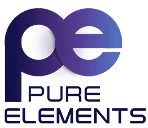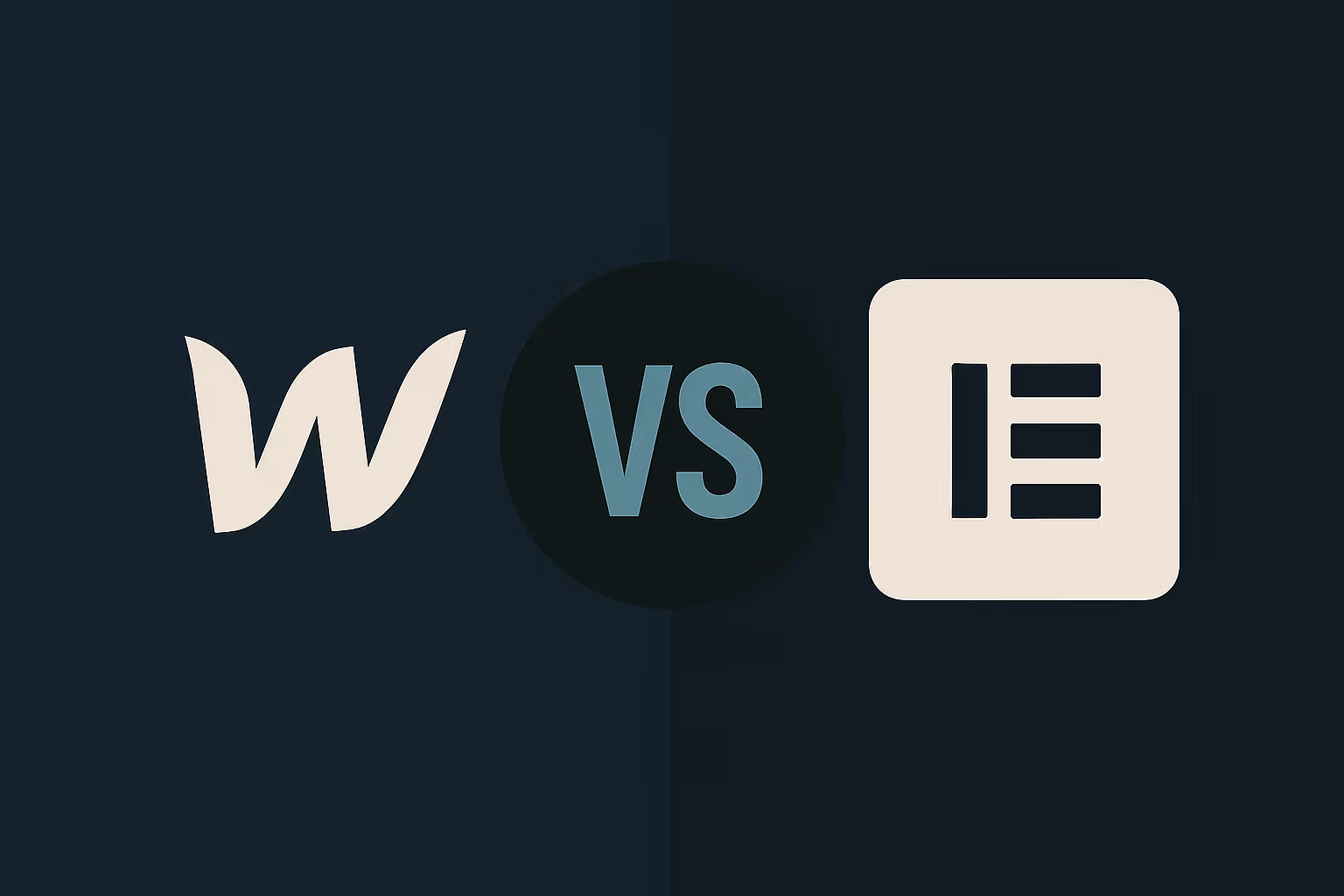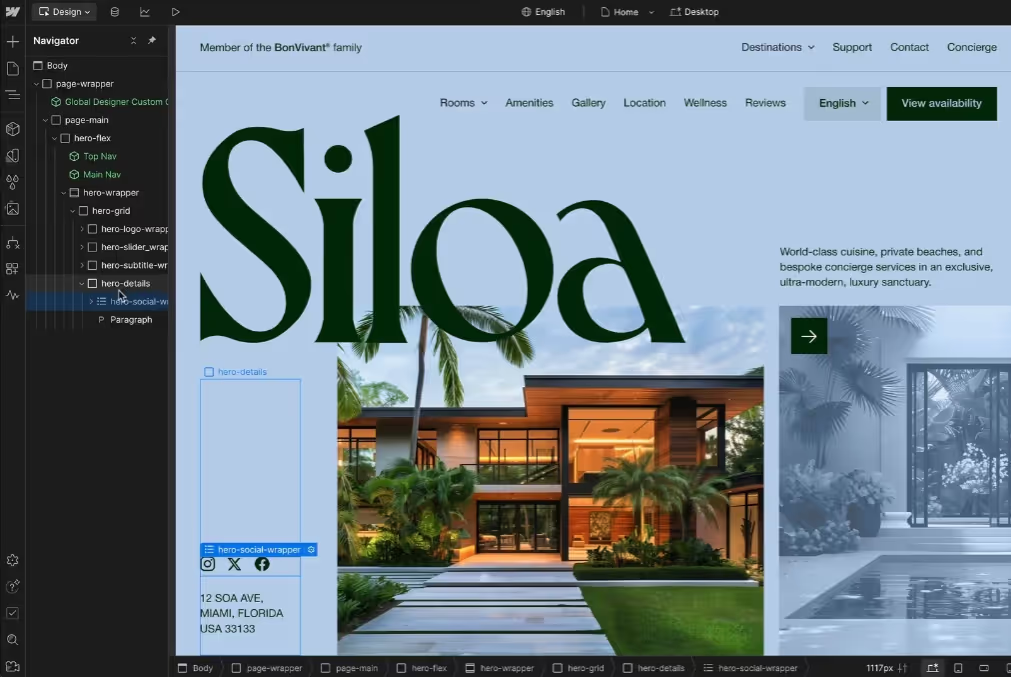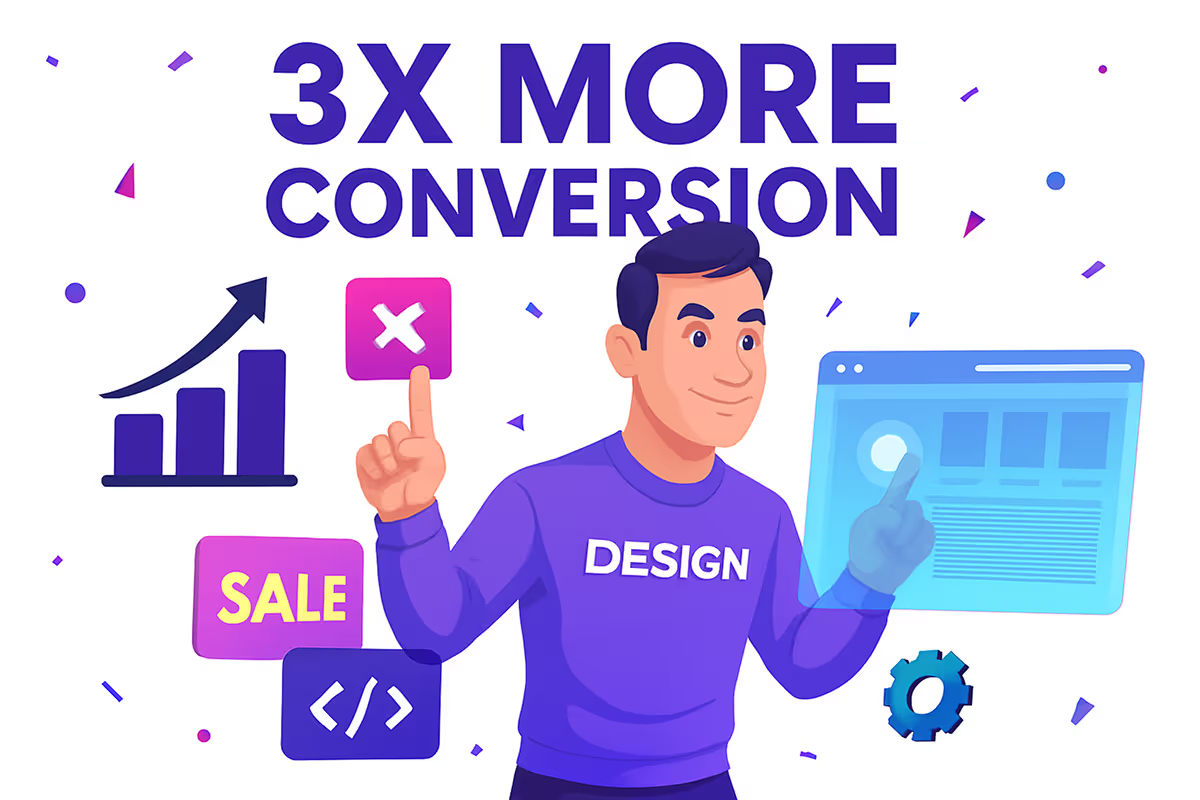

WordPress Elementor vs. Webflow: Choosing the Best Platform for Your Small Business Website

Introduction:
For small businesses looking to establish a strong online presence, choosing the right website development platform is a critical decision. Two powerful contenders often come up in this discussion: WordPress (especially with the Elementor page builder) and Webflow. Both offer robust features for creating stunning, functional websites without extensive coding knowledge, but they cater to different needs and skill sets.
This comprehensive guide will break down WordPress Elementor and Webflow, comparing them across key criteria relevant to small business website development.
Understanding the Contenders
Before diving into the comparison, let's briefly introduce each platform:
WordPress with Elementor:
WordPress is the world's most popular Content Management System (CMS), powering over 40% of all websites. While WordPress itself is a versatile framework, its native editor can be basic for design-intensive sites. This is where Elementor, a powerful drag-and-drop page builder plugin, comes in. Elementor allows users to visually design and customize virtually every aspect of their WordPress site without touching code.
Webflow:
Webflow is an all-in-one visual web development platform that combines design, CMS, and hosting into a single service. It's often described as a "no-code" or "low-code" tool that gives designers pixel-perfect control over their website's layout and functionality, translating visual designs directly into clean, production-ready code.

Key Comparison Factors for Small Businesses
When evaluating WordPress Elementor and Webflow for your small business, consider the following aspects:
1. Ease of Use and Learning Curve
- WordPress Elementor: Generally considered more beginner-friendly, especially if you're already familiar with the WordPress ecosystem. The drag-and-drop interface is intuitive, and many pre-designed templates and blocks can help you get started quickly. However, managing WordPress itself (updates, plugins, themes) can add a layer of complexity.
- Webflow: Webflow has a steeper learning curve than Elementor. While it's a visual builder, its interface is more akin to professional design tools (like Figma or Adobe XD) and requires a basic understanding of web design principles (e.g., box model, Flexbox, Grid). Once mastered, it offers unparalleled design freedom.
2. Design Flexibility and Customization
- WordPress Elementor: Elementor offers significant design flexibility within the WordPress environment. You can customize layouts, styles, and make sites responsive. However, you're still working within the confines of your chosen WordPress theme, and achieving truly unique, pixel-perfect designs might require custom CSS or additional add-ons.
- Webflow: This is where Webflow truly shines. It provides absolute design freedom, allowing you to build from scratch without template limitations. Its visual editor translates your designs directly into clean HTML, CSS, and JavaScript, giving you granular control over every element, animation, and interaction.
3. Content Management System (CMS) Capabilities
- WordPress Elementor: WordPress is renowned for its robust CMS. Elementor integrates seamlessly with WordPress's content management features, allowing you to build pages and posts using its editor while WordPress handles categories, tags, and custom post types. However, for advanced custom fields or complex content structures, you might need additional plugins like Advanced Custom Fields (ACF).
- Webflow: Webflow's built-in CMS is powerful and intuitive. It allows you to create custom content types (e.g., blog posts, portfolios, team members) and design dynamic templates for them. Content updates are managed directly within the visual editor, providing a more integrated and streamlined experience.
4. Plugins and Integrations
- WordPress Elementor: WordPress boasts an enormous ecosystem of plugins for virtually any functionality (SEO, e-commerce, forms, security, caching, etc.). While this offers immense flexibility, relying on numerous plugins can lead to compatibility issues, slow down your site, and introduce security vulnerabilities if not properly managed. Elementor itself is a plugin, and its Pro version extends its capabilities significantly.
- Webflow: Webflow aims to minimize plugin dependency by offering many features built directly into the platform (e.g., SEO, animations, forms, basic e-commerce). It also integrates with popular third-party tools via native integrations or tools like Zapier, reducing the need for multiple external plugins.
5. Hosting and Performance
- WordPress Elementor: With WordPress, you need to find and manage your own hosting provider. Performance can vary significantly based on your host, theme, plugin choices, and optimization efforts. Elementor itself can add some overhead, potentially impacting page load speed if not optimized.
- Webflow: Webflow is an all-in-one platform that includes managed hosting powered by Amazon Web Services (AWS) and Fastly CDN. This means highly optimized performance, reliability, and security out-of-the-box. Webflow sites are known for their fast loading times and clean code, which is beneficial for user experience and SEO.
6. SEO Capabilities
- WordPress Elementor: Elementor works well with popular WordPress SEO plugins like Yoast SEO or Rank Math, giving you comprehensive control over meta titles, descriptions, sitemaps, and schema markup. Effective SEO largely depends on proper configuration of these plugins and overall site optimization.
- Webflow: Webflow is inherently SEO-friendly, offering built-in controls for meta tags, descriptions, alt text, custom URLs, and automatic sitemap generation. Its clean code and fast hosting contribute positively to SEO performance without needing additional plugins.
7. E-commerce Capabilities
- WordPress Elementor: When it comes to e-commerce, WordPress integrates seamlessly with WooCommerce, the most popular e-commerce platform. Elementor Pro offers specific widgets and theme builder capabilities to customize your WooCommerce store's design. This combination is highly scalable and feature-rich for online shops.
- Webflow: Webflow has its own integrated e-commerce functionality. While capable for small to medium-sized stores with essential features like product listings, shopping carts, and payment processing, it might feel limited compared to dedicated e-commerce platforms like WooCommerce or Shopify for highly complex or large-scale online businesses.
8. Cost
WordPress Elementor: The WordPress software itself is free. However, you'll incur costs for:
- Hosting: Varies widely, from a few dollars to hundreds per month.
- Domain Name: ~$10-15/year.
- Elementor Pro: Starts at $49/year for 1 site, with higher tiers for multiple sites.
- Premium Themes/Plugins: Can add significant costs, depending on your needs.
- Maintenance: Potentially ongoing costs for security, updates, and backups.
Webflow: Webflow's pricing is all-inclusive and typically structured in Site Plans (for hosting your website) and Workspace Plans (for team collaboration).
- Site Plans: Start around $14-$29/month (billed annually) for basic and CMS sites, with Business and E-commerce plans being higher.
Workspace Plans: (Optional, for teams) start from $19/user/month (billed annually).Generally, Webflow can appear more expensive upfront due to its bundled services, but it often simplifies cost management by including hosting, CMS, and many features that would require separate purchases or plugins in WordPress.

Comparison Table: WordPress Elementor vs. Webflow
Pros and Cons for Small Businesses
WordPress Elementor Pros:
- Lower Barrier to Entry: Easier for beginners to grasp quickly, especially if they have some WordPress experience.
- Massive Community & Resources: Huge global community, countless tutorials, forums, and developers available for support.
- Vast Plugin Ecosystem: Access to tens of thousands of plugins for virtually any functionality (e.g., SEO, security, forms, caching, memberships).
- WooCommerce Integration: Best-in-class e-commerce solution for robust online stores.
- Cost-Effective Start: The core WordPress and Elementor free versions allow for a very low initial investment.
Cons: - Maintenance Overhead: Requires ongoing management of WordPress core, themes, and plugins for security and updates.
- Performance Challenges: Can become slow or "bloated" if too many plugins are used or not properly optimized.
- Security Concerns: As the most popular CMS, it's a frequent target for hackers, necessitating vigilant security measures.
- Plugin Conflicts: Managing numerous plugins can lead to compatibility issues and troubleshooting headaches.
- Design Limitations (without Pro/Code): While flexible, achieving truly unique, custom designs without Elementor Pro or custom code can be challenging.
Webflow Pros:
- Unrivaled Design Freedom: Pixel-perfect control for highly custom and visually stunning websites.
- Clean Code: Generates semantic, clean HTML, CSS, and JavaScript, leading to excellent performance and SEO.
- All-in-One Solution: Design, CMS, and hosting are integrated, simplifying workflows and reducing compatibility issues.
- Built-in Performance & Security: Managed hosting ensures fast loading times and robust security without extra effort.
- No Plugin Dependency: Many features are built-in, reducing the need for third-party plugins and potential conflicts.
- Excellent for Responsive Design: Built from the ground up to create responsive sites across all devices.
Cons: - Steeper Learning Curve: Requires a better understanding of web design concepts, making it less immediate for complete beginners.
- Higher Entry Cost: Typically more expensive than a basic WordPress + Elementor setup due to bundled services.
- E-commerce Limitations: While capable, its e-commerce platform is less robust and scalable than WooCommerce for large or complex stores.
- Fewer Integrations (compared to WP plugins): While it has key integrations, the sheer volume of niche solutions available for WordPress isn't matched.
- Vendor Lock-in: You're largely tied to Webflow's ecosystem for hosting and core functionality.
Which is Right for Your Small Business?
The best choice between WordPress Elementor and Webflow depends heavily on your specific needs, budget, and comfort level with web design and technology.
Choose WordPress Elementor if:
- You're on a tight budget and want to start with minimal investment.
- You're already familiar with WordPress or prefer an open-source platform.
- Your primary need is a powerful blogging platform or you plan to build a large e-commerce store with WooCommerce.
- You are comfortable managing updates, plugins, and security, or you have a developer who can handle this for you.
- You prioritize access to a vast array of plugins for specific functionalities.
Choose Webflow if:
- You prioritize pixel-perfect design control and a highly custom, unique aesthetic for your brand.
- You value clean code, optimal performance, and built-in SEO without much manual optimization.
- You want an all-in-one solution that includes hosting and CMS, minimizing third-party dependencies.
- You or your designer are willing to invest time in learning a more sophisticated design interface.
- Your e-commerce needs are relatively straightforward, or your main focus isn't a massive online store.
- You value a streamlined workflow with less concern about plugin conflicts or updates.
Conclusion:
Both WordPress with Elementor and Webflow are excellent choices for small businesses, each with distinct strengths. WordPress Elementor offers accessibility, a massive ecosystem, and unmatched e-commerce power via WooCommerce, making it ideal for those seeking flexibility and a lower initial cost. Webflow, on the other hand, empowers designers with unparalleled creative control, cleaner code, and superior performance right out of the box, offering a more streamlined and visually-driven development experience.
Ultimately, assess your business's unique requirements, your team's technical comfort, and your long-term goals to make the most informed decision for your online presence.


Recommended Posts













































